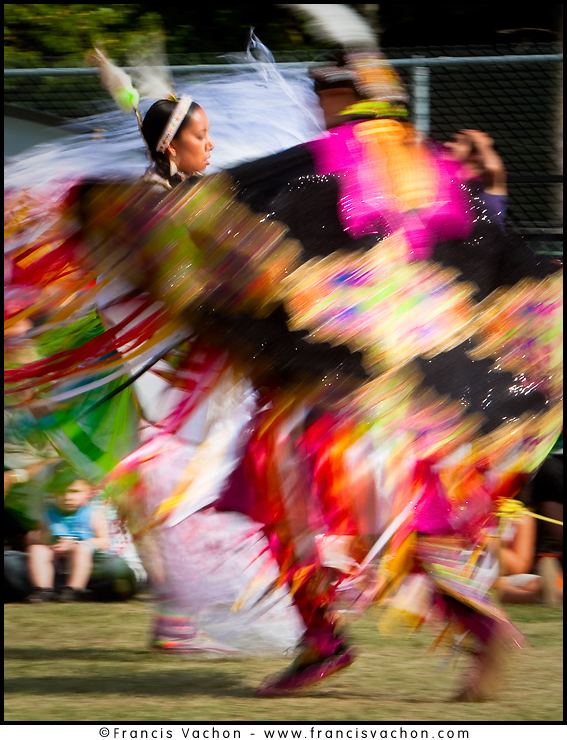
Natives of the Americas gathered to Wendake, just North of Quebec City, to take part into a the annual pow-wow of the Huron-Wendat nation. More pictures to come in the next few days…
Écrit le . Publié dans Actualités, Documentaire, Mon travail photographique. 2 Commentaires

Natives of the Americas gathered to Wendake, just North of Quebec City, to take part into a the annual pow-wow of the Huron-Wendat nation. More pictures to come in the next few days…
Écrit le . Publié dans Documentaire, Mon travail photographique. 6 Commentaires
It’s rare that a non freemason can visit one, but for my other blog Quebec Urbain, I was able to visit a Masonic Lodge. Article (in French) on Quebec Urbain, and all the photos on my stock site.
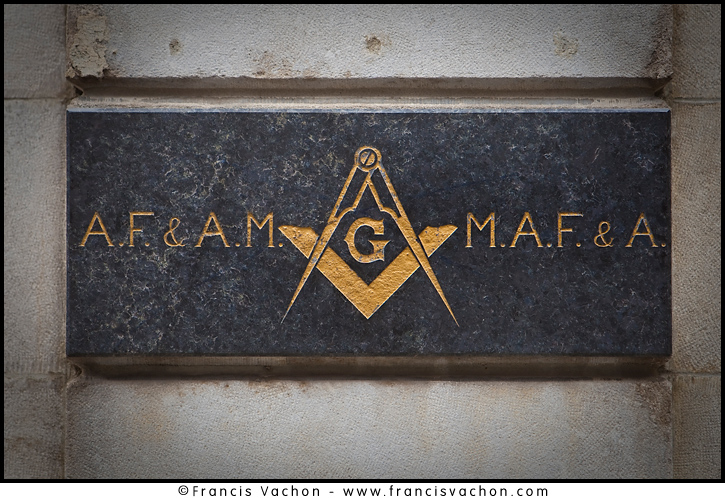
Freemason logo is pictured outside of the Loge Albion / St.John’s Masonic Lodge in Quebec City June 23, 2010. Freemasonry is a fraternal organisation that arose from obscure origins in the late 16th to early 17th century.
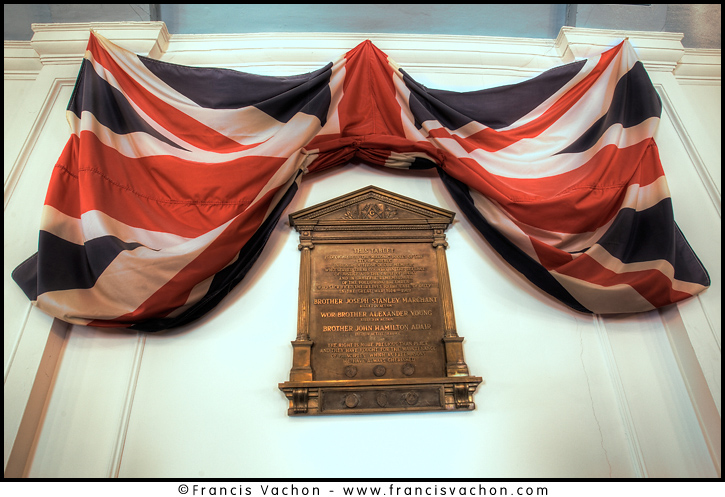
A British flag is pictured above a tablet perpetuating the memory of local freemason died during the first World War.
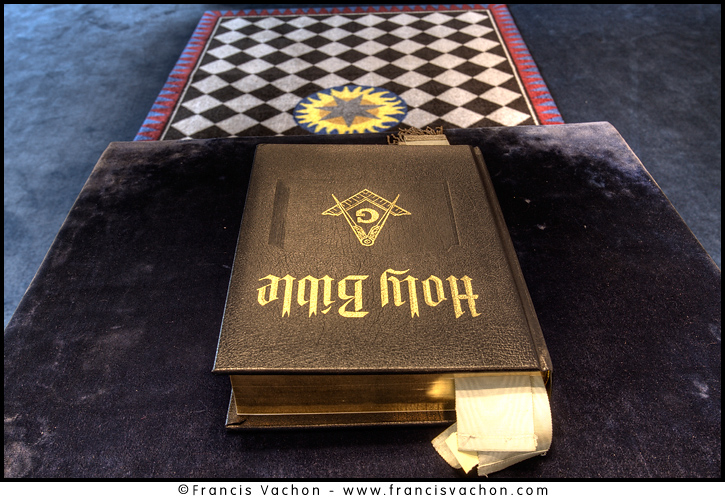
A Volume of the Sacred Law, represented here as the Holy Bible, is pictured in the ritual room
Écrit le . Publié dans Documentaire, Moments trouvés, Mon travail photographique. 4 Commentaires
Yes, more image from Toronto. Today, I bring you to the Chinatown.
Chinatown (Chinese: 多倫多華埠) is an ethnic enclave in Downtown Toronto with a high concentration of ethnic Chinese residents and businesses extending along Dundas Street West and Spadina Avenue. First developed in the late 19th century, it is now one of the largest Chinatowns in North America and one of several major Chinese-Canadian communities in the Greater Toronto Area
[Wikipedia]
More Toronto Chinatown images on my stock photo site.

A man walks by stalls of vegetables Toronto Chinatown.
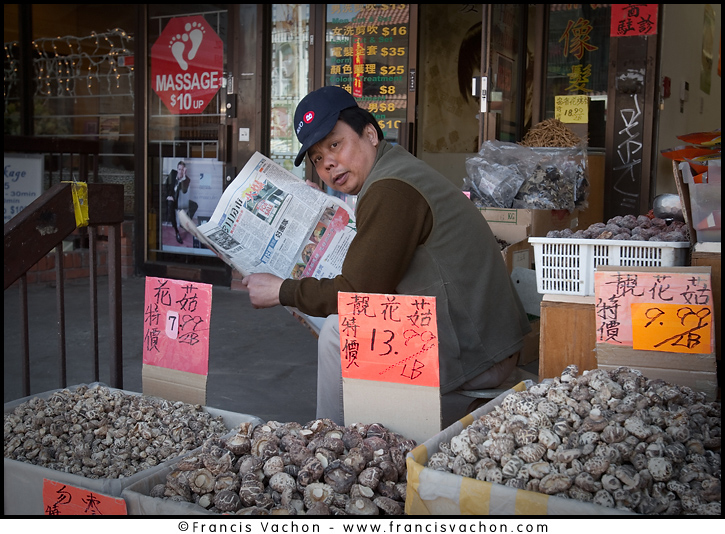
A vendor reads a Chinese newspaper behind stalls in Toronto Chinatown
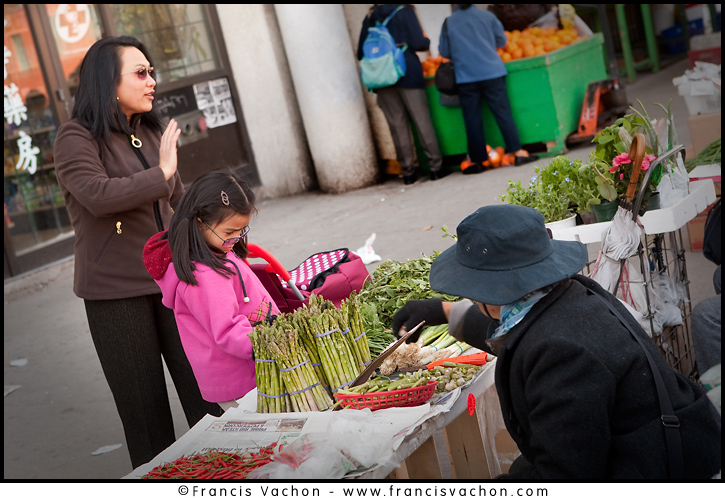
A woman and her daughter look at vegetables on display on a stall installed on the sidewalk on Spadina avenue in Toronto Chinatown.
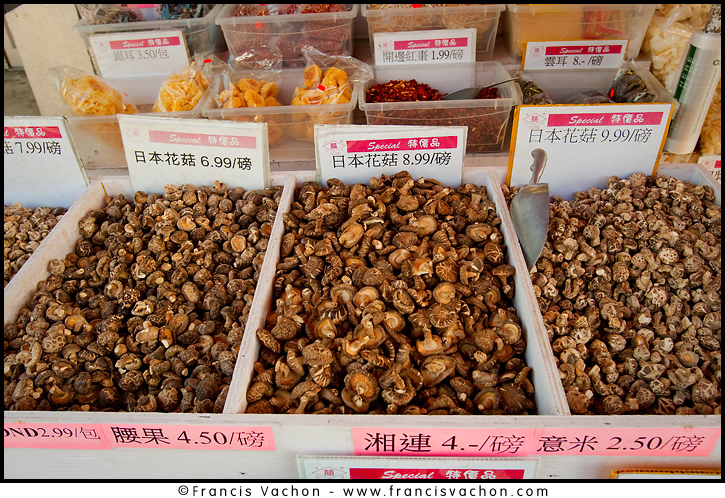
Mushrooms are on display in stalls in Toronto Chinatown
Écrit le . Publié dans Documentaire, Moments trouvés, Mon travail photographique, Stock photo. 2 Commentaires
With eclectic shops, cafes and restaurants, Kensington Market is my preferred spot in Toronto. That’t the first pace I went to shoot in the morning after my first night at the hotel. It’s a distinctive multicultural neighborhood where you can hear probably 50 different languages if you sit on a bench for an hour.

A woman walks in front of a graffiti in Toronto Kensington Market.
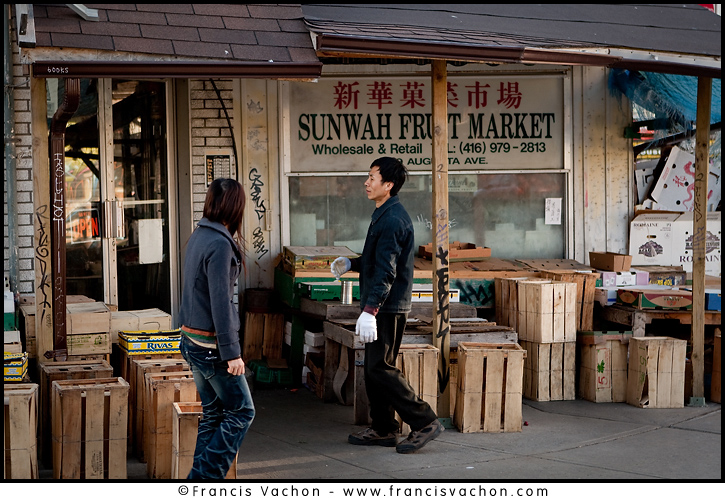
Vendors prepares the stalls in front of a fruit market store early in the morning in Toronto Kensington Market.
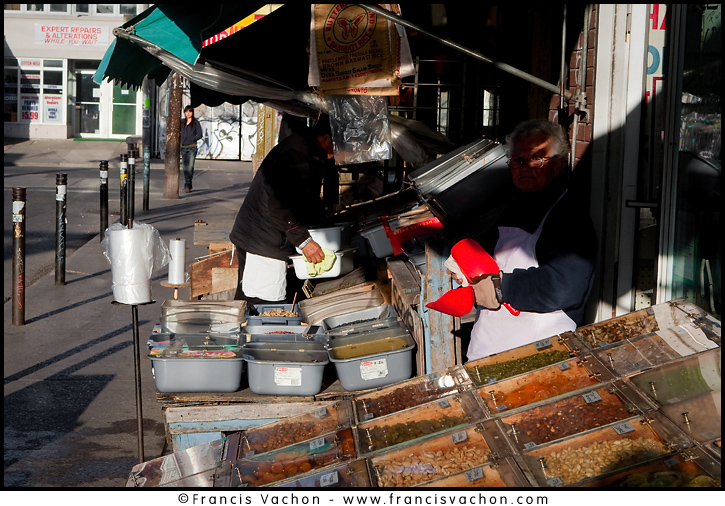
A vendor looks on her stalls in Toronto Kensington.
Écrit le . Publié dans Documentaire, Mon travail photographique, Multimedia. 2 Commentaires
The huron (Wyandot) language has been dormant for over 150 years, but it hasn’t been forgotten. A course that aims to keep the Huron language and culture alive is given at the Huron-Wendat native reserve of Wendake, just north of Quebec City.

Manon Sioui helps her father Roland Sioui during a game of « Yawingo », a play of word for Bingo, to learn numbers
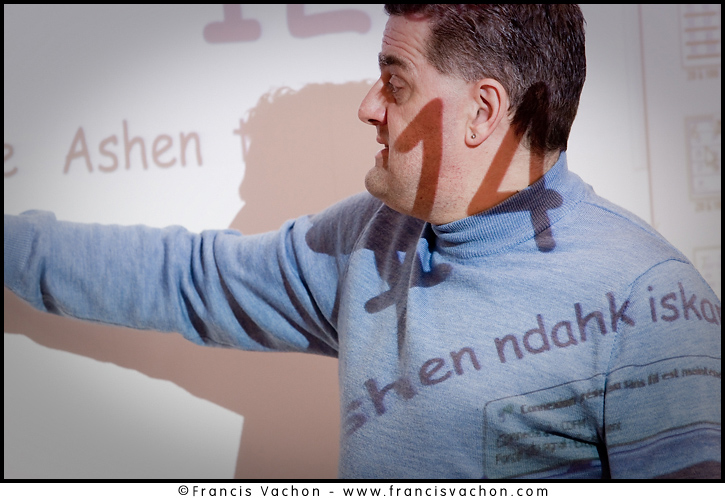
Numbers and their written correspondence in Huron are projected on assistant teacher Marcel Godbout
Full story on The Gazette Website, including an audio slideshow. My first ever!
Écrit le . Publié dans Documentaire, Mon travail photographique. 10 Commentaires
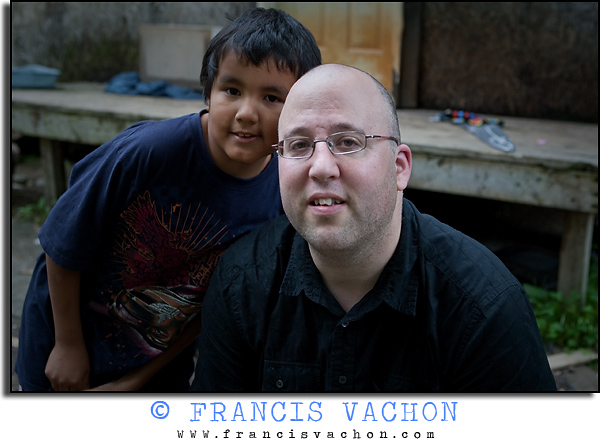
Francis Vachon (that would be me) and a young Anicinape / Algonquin in Kitcisakik
| The Anicinape / Algonquin community of Kitcisakik is the home of about 430 natives. Located in the Réserve faunique de la Verendrye wildlife reserve, the community never left there ancestral land and don’t have an official statue. They are considered squatters by the crown.
They are negotiating with the government for an official recognition and a new village, which would be designed by famous Canadian architect Douglas Cardinal, who designed the Cree reserve of Ouje-Bougoumou, which won recognition and awards for its modern concepts combining economic sustainability, environmental conservation, and design. Until then, the Algonquins lives in what I should politely call modest home. They don’t have access to running water or electricity (even if there is a hydro-electric dam IN their village!). They burn thousands of liters of fuel each month for their generators. Nonetheless, they are the most welcoming people ever. I had such a good time, it’s a pity it is about 8 hours from my home. But I WILL go back. |
Environs 430 autochtone vive dans la communauté Anicinape / Algonquine de Kitcisakik. Localisé dans la Réserve faunique de la Vérendrye, la communauté n’a jamais quittée ses terres ancestrales et est maintenant sans statut légal et ses habitants sont considérés comme des squatteurs.
Ils sont présentement en négociation avec le gouvernement pour obtenir une reconnaissance officiel et un financement pour la construction d’un nouveau village qui serait l’œuvre du grand architecte Douglas Cardinal. Ce dernier a déjà realisé les plans de la communauté Crie de Ouje-Bougoumou qui a remporté de nombreux prix et reconnaissance pour son concept moderne combinant son auto-sufisance énonomqiue, sa conservatin énergétique, et son design. En attendant, ces Algonquins vivent dans ce que j’appellerai poliment des maisons modestes sans accès à l’eau courante ou à l’électricité (même s’il y a un barrage dans leur village!). Ils brûles des milliers de litres d’essence chaque mois pour alimenté leurs génératrices. Malgré tout, ils sont parmi les gens les plus accueillant que j’ai rencontré. J’ai eu un plaisir fou à les côtoyer pendant quelques heures. C’est dommage que la communauté est à environs 8 heures de voiture de chez moi… Mais j’y retournerai! |
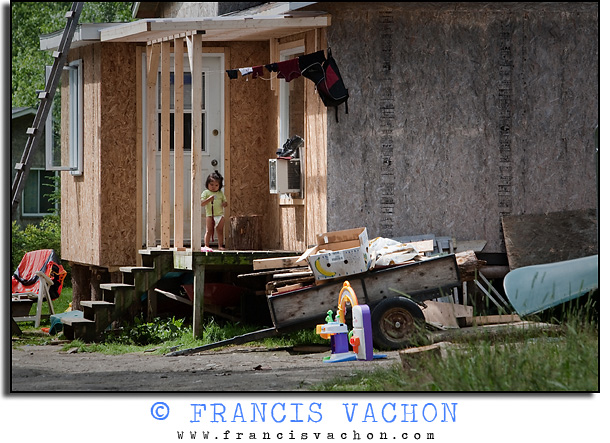
20 months old Janice Papatie plays under her house porch in the algonquin Anicinape community of Kitcisakik in Quebec, Canada, July 18, 2009
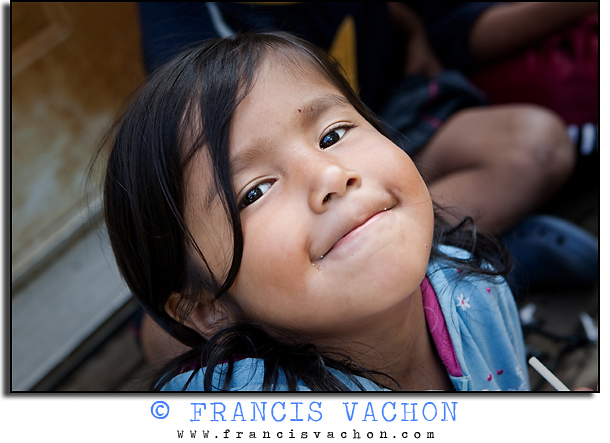
A young girl smiles to the photographer in the algonquin Anicinape community of Kitcisakik in Quebec, Canada
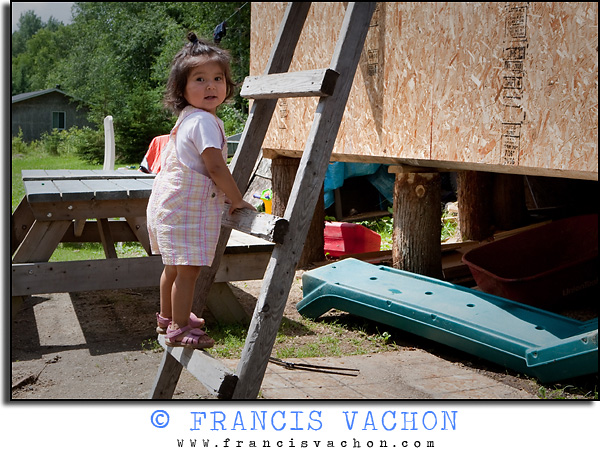
20 months old Janice Papatie climbs a ladder on her house
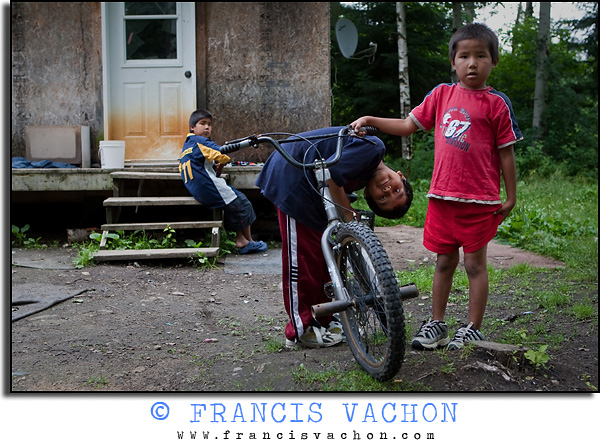
Two young aboriginals works on a bike in front of a modest house in the algonquin Anicinape community of Kitcisakik
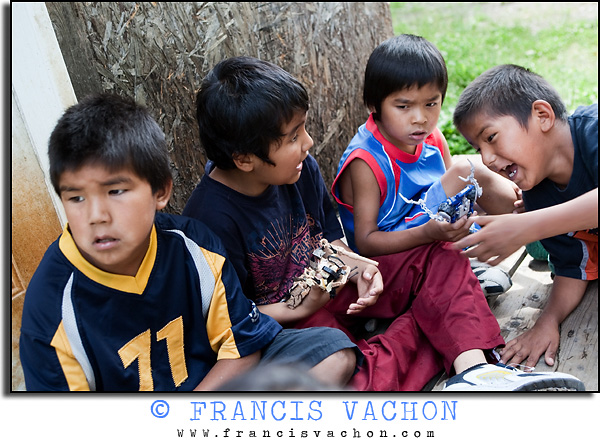
A bunch of young aboriginals play with their « transformer » toys in front of a modest house
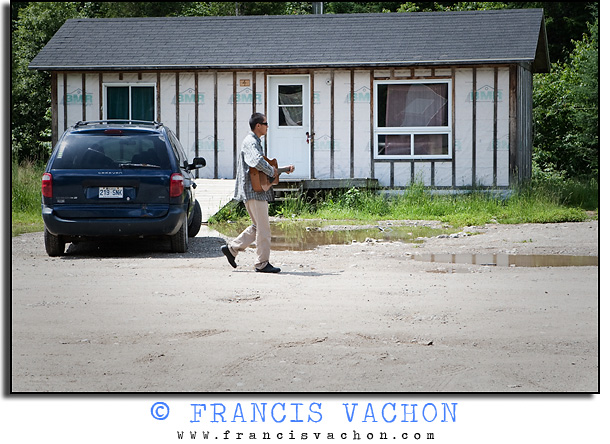
A young man plays the guitar as we walks by a modest house in the algonquin Anicinape community of Kitcisakik in Quebec, Canada
More images of the Kitcisakik Algonquin / Anicinape community on my stock site
You might also like: